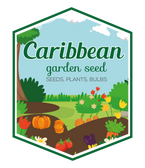
Japanese Toad Lily SEEDS (Tricyrtis Hirta) GREAT FOR SHADE
FAST & FREE SHIPPING
Over 90% of our orders are processed and ship out by next business day.
We are currently processing and shipping most orders within 1-3 business days. (backorders not included) Due to high demand during the peak months of January to May, orders may require additional time for packaging /shipment.
Free shipping for orders over $54.95. Excludes live plants, fresh products And Stackable Black Plastic Nursery Crate
Shipping and handling charges will cover outbound freight and packaging materials. Fees are applicable to all orders, based on total order value pre-tax. Expedited services can be selected at Checkout with extra fees.
- Free shipping to lower 48 states on orders $54.95+
- (Most Items), excluding live plants, plant bulbs, and black plastic nursery crate.
- Safe Seed Pledge
- Satisfaction Guaranteed
- Select your desired size and/or color from the available options.
Tricyrtis Hirta
-
Exotic, star shaped lily-like flowers create an exciting display, just when other perennials begin to fade. Long lived and undemanding shade plants, they can also be used as cutflowers.
From the World Botanics range.
The complex flowers of this beautiful fall-blooming ornamental add interest to shaded gardens.
Japanese toadlily is an herbaceous woodland perennial that originates from Japan. It produces clumps of upright to arching stems lined with lightly hairy green leaves. In late summer to fall, intricate orchid-like flowers appear along the stems at the base of the leaves. The blooms are commonly white with maroon-purple spots and have prominent three parted stigmas that rise from the center of each.
This underused ornamental needs partial to full shade and thrives in evenly moist, organic-rich loam. Avoid alkaline and very wet soils. In cold regions a leaf mulch should be placed over the roots during winter; spring sprouting is late to occur. Plant it the dappled shade of woodland settings along with other perennials for shade, such as hosta, foamflower, maidenhair fern and lungwort. It is most impressive when planted in large sweeping masses.
Information source: http://learn2grow.com/plants/tricyrtis-hirta/
Genus - Tricyrtis
Species - Hirta
Common name - Japanese Toad Lily
Pre-Treatment - Required
Hardiness zones - 4 - 9
Height - 0,45 - 0,75 m
Spread - 0,50 - 0,60 m
Plant type - Perennial flower
Exposure - Partial Shade, Full Shade
Growth rate - Medium
Soil PH - Acidic, Neutral
Soil type - Clay, loam, well drained
Water requirements - Average
Landscape uses - Feature Plant, Groundcover, Mixed Border
Bloom season - August - October
Leaf / Flower color - Green / White, Purple, Burgundy
GERMINATION INSTRUCTIONS
Sow from January to March indoors in pots or trays of seed compost.
Sow thinly, cover with a very fine layer of compost.
Cover with glas or clear plastic.
Keep at +20C.
Germination time - 28-42 days.
If germination has not started, transfer to refrigerator for 2 weeks before returning to the warmth to trigger germination process. - Best sown indoors at 55-65° with NO cover as light aids in germination
- Seed germination will be erratic and will occur over 30-50 days
- It is not recommended to sow seeds outdoors
How to Grow Tricyrtis:
Transplanting: Transplant when there are at least two sets of true leaves
Spacing: Space 1 foot apart in full to part shade
Soil: Site in acidic, rich, moist, woodland-type, well-drained soil
Additional Care: Divide the rhizomatous plants in the early spring when they are still dormant. Feed in the spring with a balanced fertilizer. Seedlings grow very slowly
Appearance and Use:
The following are perennials for shady borders and naturalized situations. The 11/4 inch, smooth-textured, funnel-shaped flowers of both species appear in late summer through fall; the flowers of T. formosana last a few weeks longer but may be slightly smaller. Tricyrtis formosana grows 1-2 feet tall by 2 feet wide, has glossy, dark green leaves, and its flowers are white to pinkish with prominent crimson spots and a yellow eye. Hardy from Zones 4-9. Tricyrtis hirta grows larger, from 2-3 feet tall by 2 feet wide, has hairy, pale green leaves, and its flowers are white or lavender with prominent purple spots and are without a center eye
Grow 'Blue Wonder' in moist, humus-rich, acidic soil in partial to full shade. Although this plant spreads, it is not invasive. In zones that do not receive snowfall in winter, add a leafy mulch atop the plants to protect them from cold. It is slow to emerge in spring. Use it as a companion plant for ferns and hostas in a mixed border or woodland groundcover display. Divide and transplant clumps in early spring before growth begins.
Select your desired size and color from the available optionHOW TO GROW GUIDE
LET OUR CUSTOMER SPEAK FOR US

![[Seeds] - Caribbeangardenseed](http://caribbeangardenseed.com/cdn/shop/files/gift-card-gift-card-1_1024x1024_dfa857db-9150-4315-a362-7f0bb3fb9c47_60x28.png?v=1722895789)









